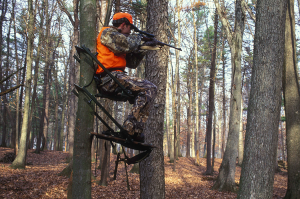 When you hear “hunting accident” the first thing that probably comes to mind is an accidental shooting. It turns out that the most common type of hunting accidents are tree stand accidents. In fact, according to Tree Stand Safety Awareness (TSSA) tree stand accidents are the number one cause of serious injury and death to deer hunters. It is estimated that more than one-third of hunters who use tree stands will be involved in a fall sometime in their hunting careers.
When you hear “hunting accident” the first thing that probably comes to mind is an accidental shooting. It turns out that the most common type of hunting accidents are tree stand accidents. In fact, according to Tree Stand Safety Awareness (TSSA) tree stand accidents are the number one cause of serious injury and death to deer hunters. It is estimated that more than one-third of hunters who use tree stands will be involved in a fall sometime in their hunting careers.
Why are Tree Stand Accidents so Common?
In 2013, the Wisconsin Department of Natural Resources warned hunters of the danger, announcing that 300-500 hunters are killed annually in tree stand accidents and about 6,000 more sustain tree stand accident injuries, according to a study by the International Hunter Education Association (IHEA).
Tree stand accidents are almost entirely preventable, with basic safety measures. But tree stand safety isn’t popular. For one thing, it requires wearing a full body harness. It also requires using it properly.
The majority of tree stand accidents occur while climbing or descending. They can also happen when hunters fall asleep in the stand.
Tree Stand Injuries
It is easy to understand why tree stand safety is overshadowed by firearm safety, but tree stand accident injuries can be fatal and those who survive can be permanently disabled. Tree stands are typically placed anywhere from 10 to 30 feet above the ground. A fall from that height is serious. The ground is often rocky, making brain or spinal cord injury even more likely. The ground make also be sloped, causing the person who falls to roll and incur more injuries.
Tree stands are often used in remote locations surrounded by rough terrain. It can be hours or even days before an injured hunter is discovered, or before they can be transported for medical treatment. The delay in treatment makes survival less likely and contributes to serious complication from the injuries. While waiting for help, hunters can suffer more injuries as a result of exposure to the elements and dehydration.
















